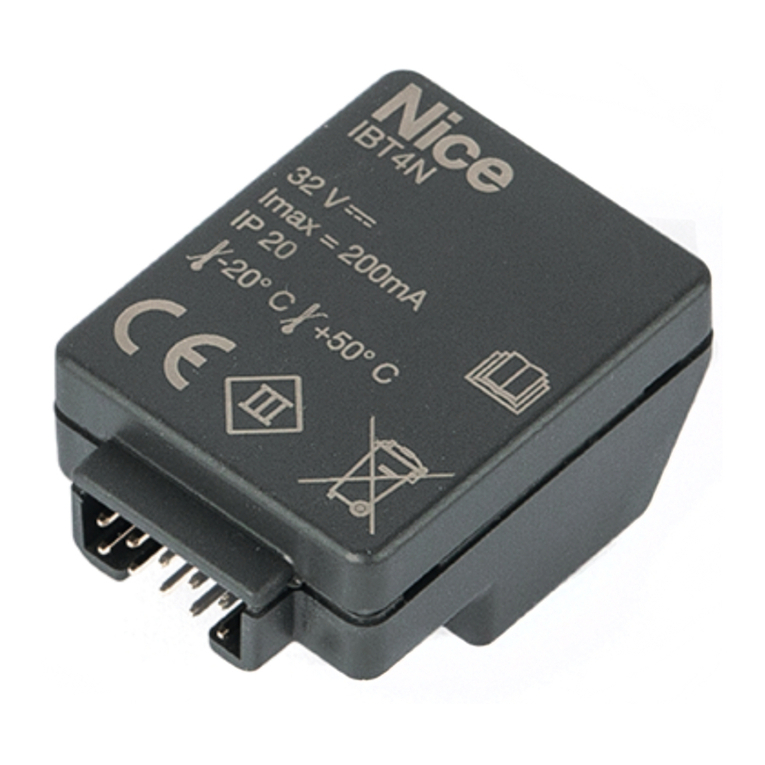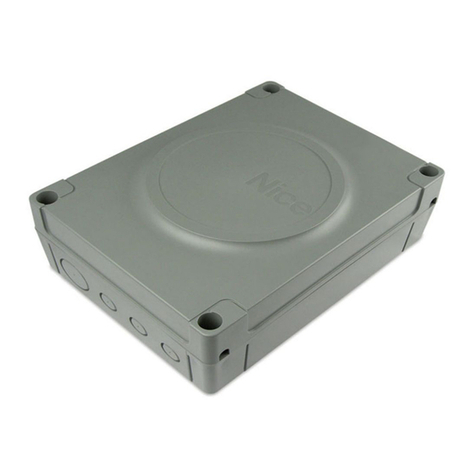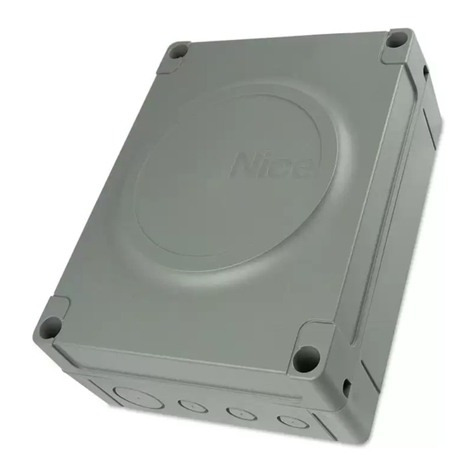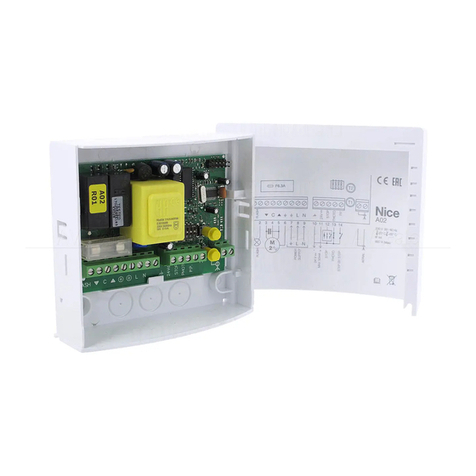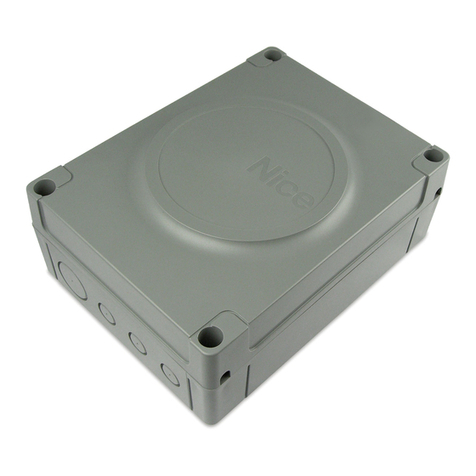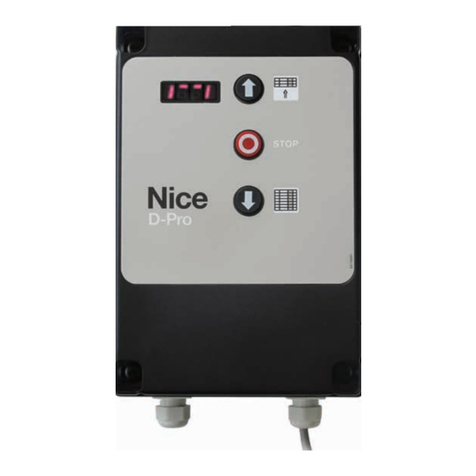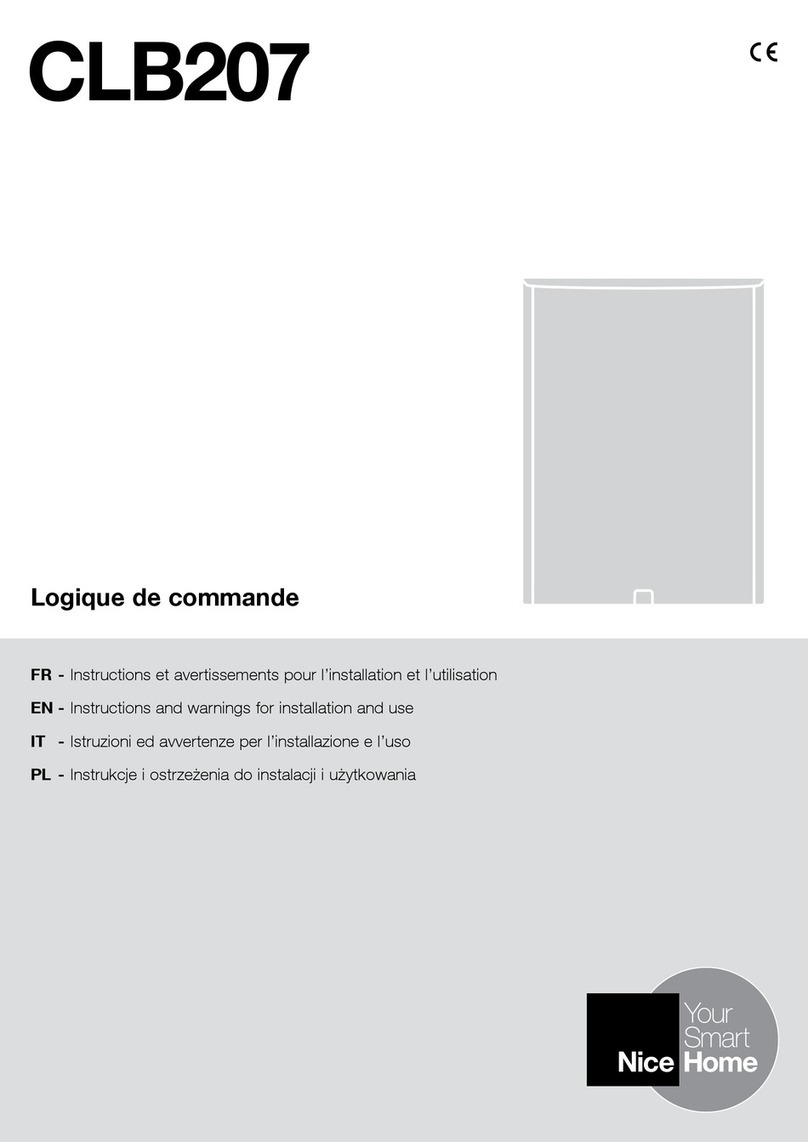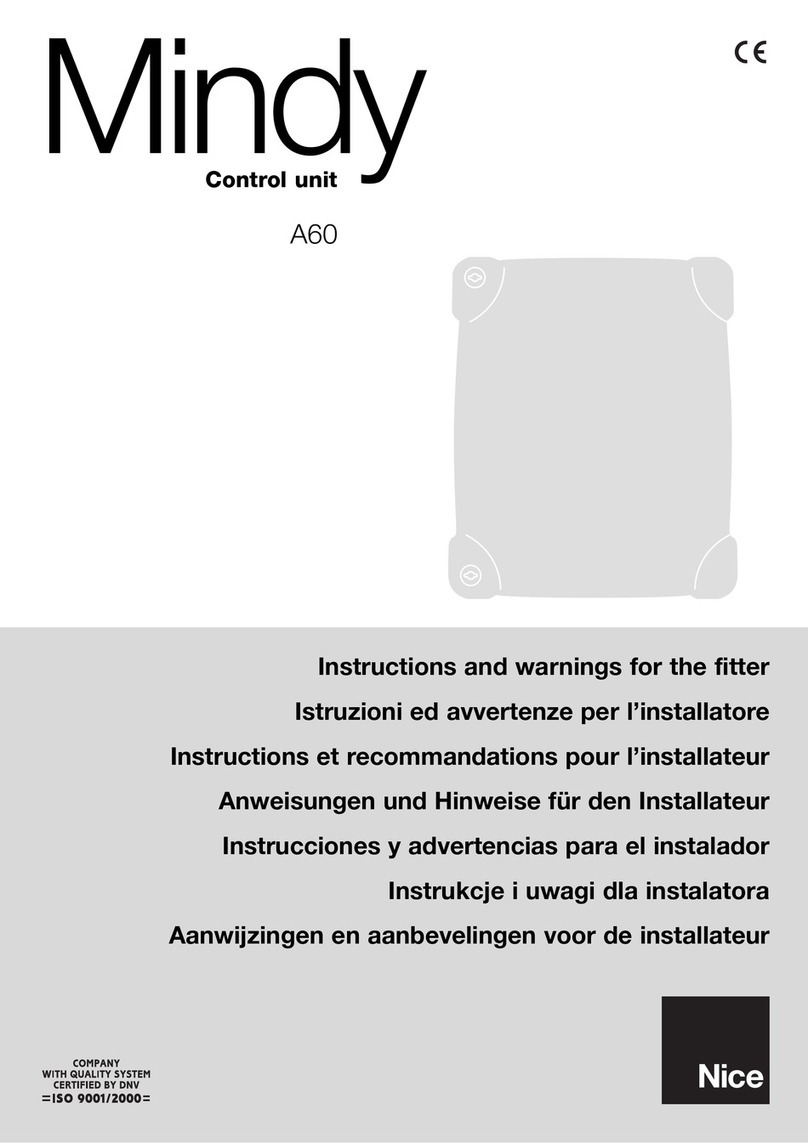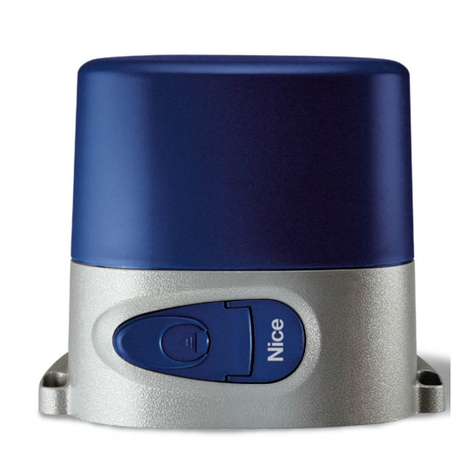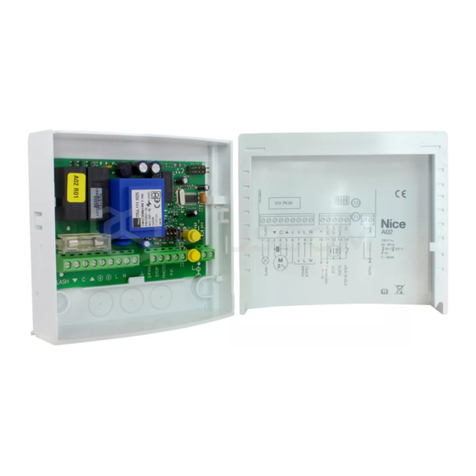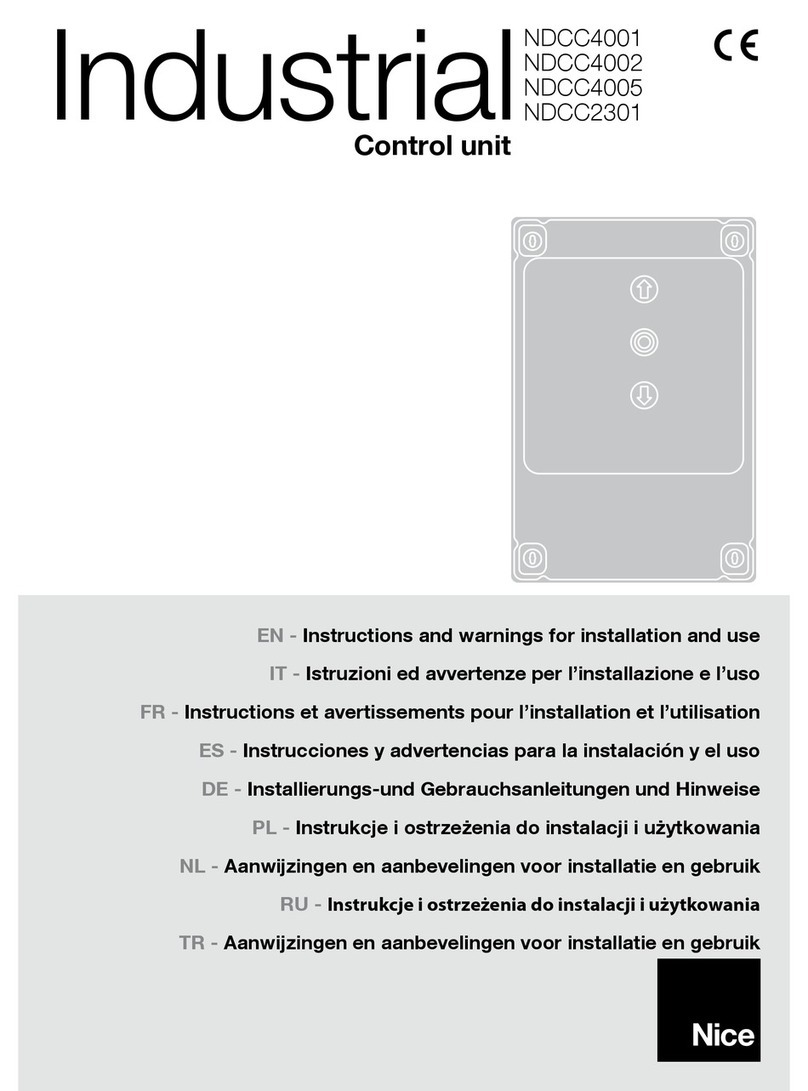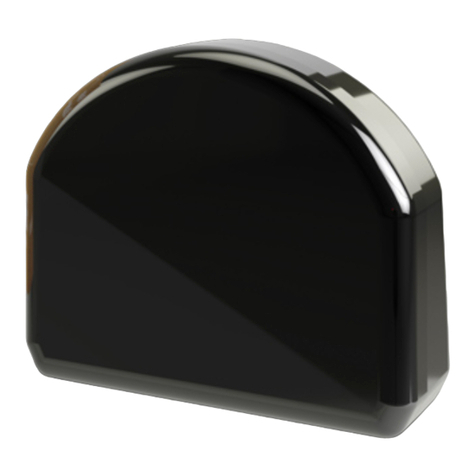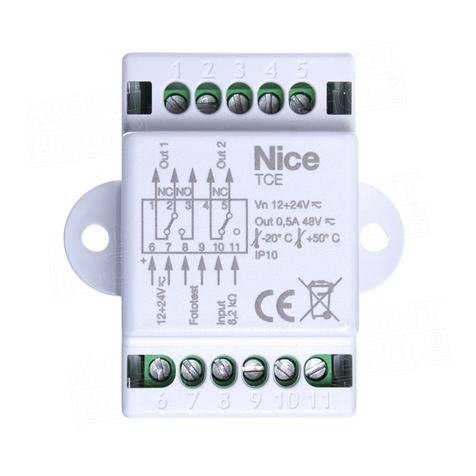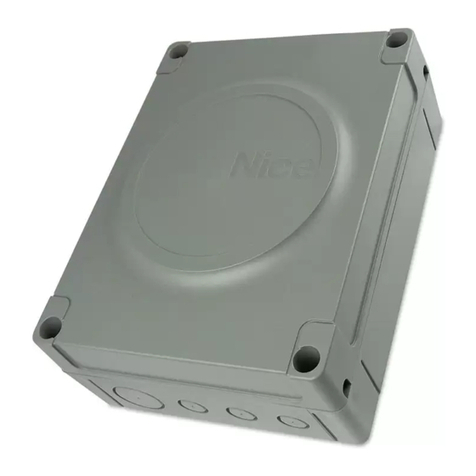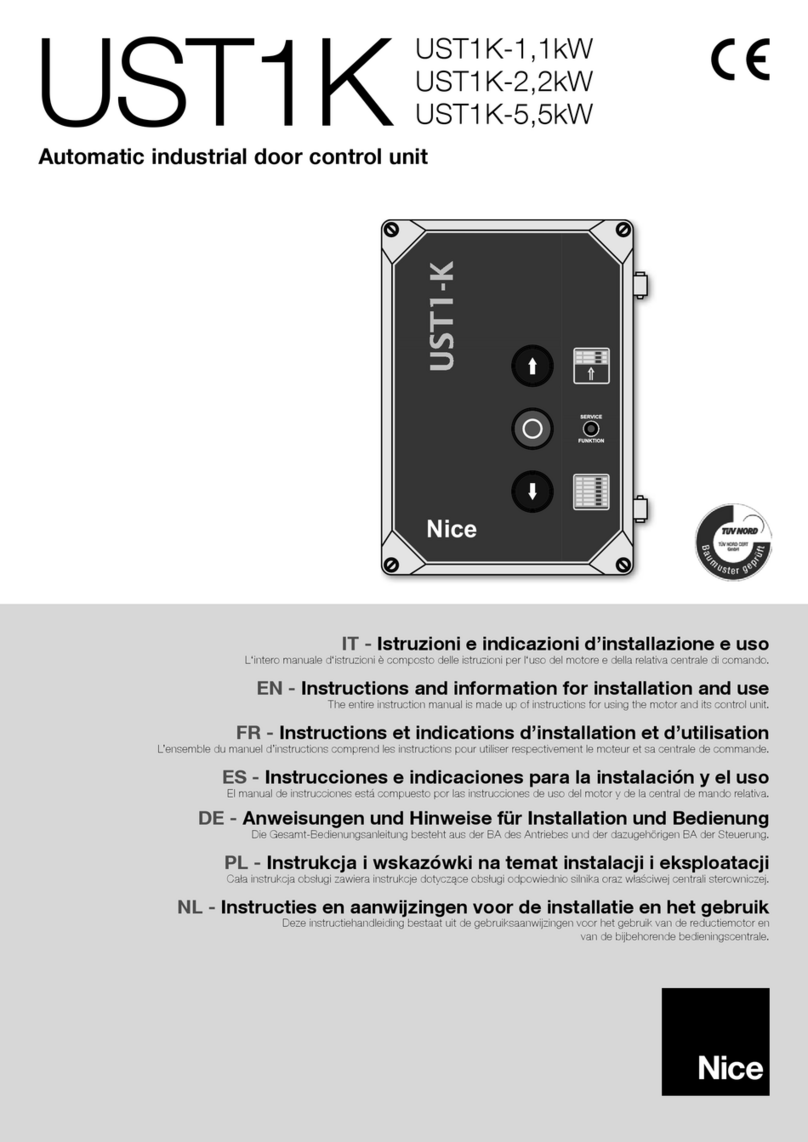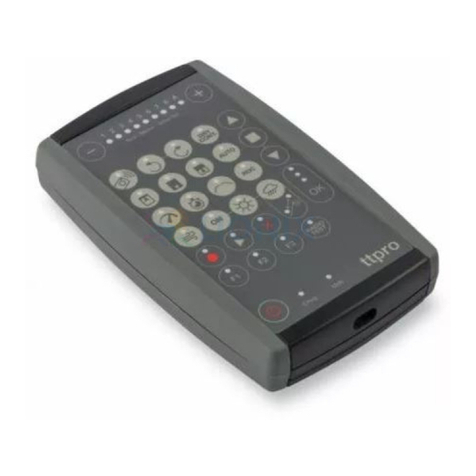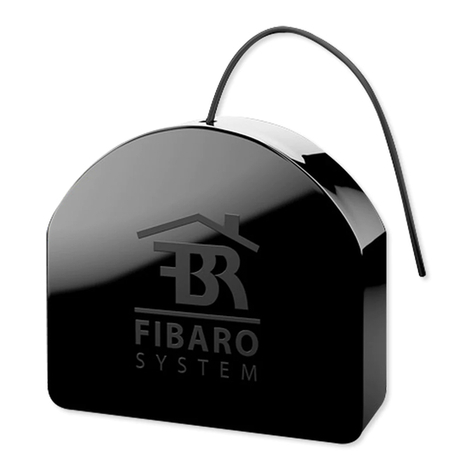
English – 3
EN
GENERAL WARNINGS: SAFETY - INSTALLATION - USE (original instructions in Italian)
CAUTION Important safety instructions. Follow all instructions as improper installation may cause serious damage
CAUTION Important safety instructions. It is important for you to comply with these instructions for your own and other
people’s safety. Keep these instructions
•Beforecommencingtheinstallation,checkthe“Producttechnicalspecications”,inparticularwhetherthisproductissuitableforautomating
your guided part. If it is not suitable, DO NOT continue with the installation.
• Theproductcannotbeusedbeforeithasbeencommissionedasspeciedinthechapteron“Testingandcommissioning”
CAUTION According to the most recent European legislation, the implementation of an automation system must comply
with the harmonised standards provided by the Machinery Directive in force, which enables declaration of
the presumed conformity of the automation. Taking this into account, all operations regarding connection to
the electricity mains supply, as well as product testing, commissioning and maintenance, must be performed
exclusively by a qualied and skilled technician!
•Before proceeding with the installation of the product, check that all materials are in good working order and suited to the intended applications
•The product is not intended for use by persons (including children) with reduced physical, sensory or mental capacities, nor by anyone with
insufcientexperienceorfamiliarity.
•Children must not play with the appliance
•Do not allow children to play with the control devices of the product. Keep the remote controls out of reach of children.
CAUTION In order to avoid any danger from inadvertent resetting of the thermal cut-off device, this appliance must not be powered
throughanexternalswitchingdevice,suchasatimer,orconnectedtoasupplythatisregularlypoweredorswitchedoffby
the circuit
•Provide a disconnection device (not supplied) in the plant’s mains power supply, with a contact opening distance that permits complete
disconnection under the conditions dictated by overvoltage category III
•Handle the product with care during installation, taking care to avoid crushing, denting or dropping it, or allowing contact with liquids of any
kind.Keeptheproductawayfromsourcesofheatandnakedames.Failuretoobservetheabovecandamagetheproduct,andincreasethe
risk of danger or malfunction. If this should happen, stop installation immediately and contact Customer Service.
•The manufacturer assumes no liability for damage to property, items or persons resulting from non-compliance with the assembly instructions.
Insuchcasesthewarrantyformaterialdefectsisexcluded
•The weighted sound pressure level of the emission A is lower than 70 dB(A)
•Cleaning and maintenance to be carried out by the user must not be carried out by unsupervised children
•Before working on the system (maintenance, cleaning), always disconnect the product from the mains power supply
•Check the system periodically, in particular all cables, springs and supports to detect possible imbalances, signs of wear or damage. Do not use
if repairs or adjustments are necessary, because a failure with the installation or an incorrectly balanced automated system may lead to injury
•The packing materials of the product must be disposed of in compliance with local regulations
Special warnings in relation to European directives applicable to the product
•“ConstructionProducts”Regulation:SpecialwarningsforthisproductinrelationtoRegulation305/2011:
-Thefullinstallationofthisproduct,asdescribedinthisinstructionmanualandforcertaintypesofuse(e.g.excludingusesolelyforvehicles)
maycausetheproducttofallwithinthescopeofRegulationNo.305/2011anditsharmonisedstandardEN13241-1.
- ItisnecessarytoapplyalltheinstallationcriteriatoensurethattheproductmeetstheessentialrequirementsofRegulationNo.305/2011;
the installer must check and make sure that all these criteria have been scrupulously complied with.
- The essential requirements might not be guaranteed if the product is installed and used without compliance with one or more of these
criteria. ItisforbiddentousetheproductinsuchcircumstancesuntiltheinstallerhasveriedcompliancewiththeDirectiverequirements;
inthiscasethe“ES13241-1.4870”labelattachedtotheproductmustberemovedimmediatelyandthe“ECDeclarationofConformity”
(AnnexItothismanual)cannotbeused.Asaresult,theinstallerinturnbecomesthemanufactureroftheproductandmustcomplywith
theprovisionsofRegulationNo.305/2011anditsharmonisedstandardEN13241-1.Inthiscasetheproductmustbeconsideredas
“partly-completedmachinery”andthe“DeclarationofConformity”ofAnnexIIcanbeused(forinclusioninthetechnicaldocumentation).
•“LowVoltage”Directive:
Specialwarningsregardingthetnessofuseofthisproductinrelationtothe“LowVoltage”Directive.Thisproductmeetstherequirements
inthe“LowVoltage”Directive,ifusedfortheuseandinthecongurationsspeciedinthisinstructionmanualandincombinationwiththe
items in the Nice S.p.a. product catalogue.
Iftheproductisusedinunspeciedcongurationsorwithotherunspeciedproducts,therequirementsmaynotbeguaranteed;theuse
oftheproductinsuchcircumstancesisprohibiteduntiltheinstallerhasveriedcompliancewiththespeciedrequirementsofthedirective.
•“Electromagneticcompatibility”Directive:
Specialwarningsregardingthetnessofuseofthisproductinrelationtothe“Electromagneticcompatibility”Directive.
Thisproducthasbeensubjectedtoelectromagneticcompatibilitytestsinthemostcriticalsituationsofuseandinthecongurationsspecied
in this instruction manual and in combination with the items in the Nice S.p.a. product catalogue.
Iftheproductisusedinunspeciedcongurationsorwithotherunspeciedproducts,theelectromagneticcompatibilitymaynotbeguar-
anteed;theuseoftheproductisprohibitedinsuchcircumstancesuntiltheinstallerhasveriedcompliancewiththespeciedrequirements
of the directive.
Installation criteria and special warnings in connection with essential requirements
•Wheninstalledcorrectly,thisproductmeetstheessentialrequirementslaiddowninRegulationNo.305/2011accordingtotherequirements
inharmonisedstandardEN13241-1,asindicatedinTable1andintheEuropeandirectiveon“Machinery”2006/42/EC.
•Releaseofdangeroussubstances:
Theproductdoesnotcontainand/orreleasehazardoussubstancesinaccordancewiththerequirementsofEN13241-1,4.2.9andaccord-
ing to the list of substances on the website of the European Community
Special warning to ensure the continued compliance with the requirement – It is essential that the other materials used in the installation,
such as electrical cables, comply with this requirement.
•Safeopeningforverticallymovingdoors:theproductdoesnotcauseuncontrolledmovements.
Specialwarningstoensurecontinuedcomplianceoftherequirements:
-InstalltheproductcarefullyfollowingalltheinstructionsdescribedinChapter“2-Installation”andChapter“4-Testingandcommissioning”.
- Ensure that a maintenance schedule is organised which scrupulously complies with all the provisions in the Chapter “Maintenance
Schedule”.
